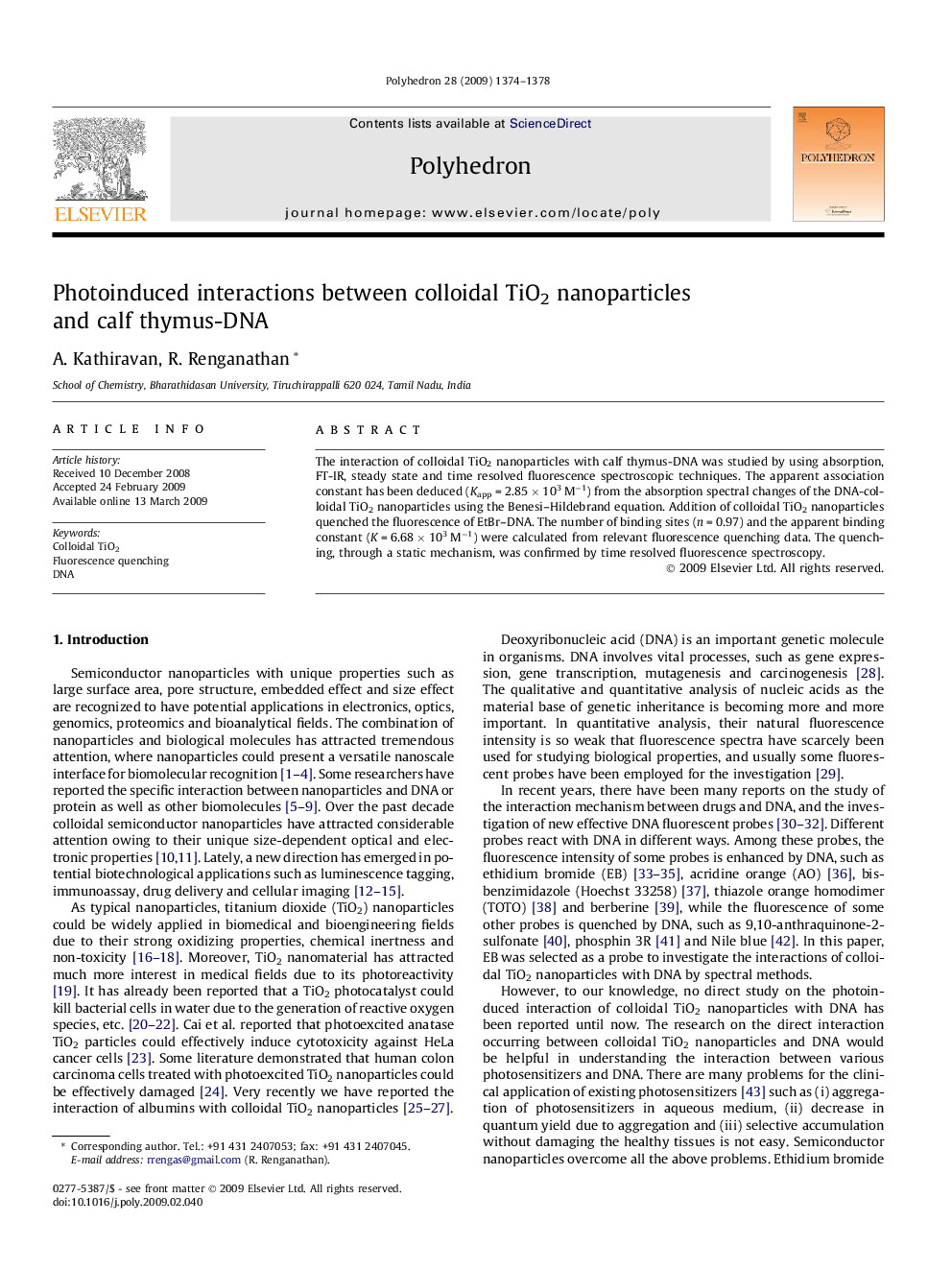| Article ID | Journal | Published Year | Pages | File Type |
|---|---|---|---|---|
| 1334994 | Polyhedron | 2009 | 5 Pages |
The interaction of colloidal TiO2 nanoparticles with calf thymus-DNA was studied by using absorption, FT-IR, steady state and time resolved fluorescence spectroscopic techniques. The apparent association constant has been deduced (Kapp = 2.85 × 103 M−1) from the absorption spectral changes of the DNA-colloidal TiO2 nanoparticles using the Benesi–Hildebrand equation. Addition of colloidal TiO2 nanoparticles quenched the fluorescence of EtBr–DNA. The number of binding sites (n = 0.97) and the apparent binding constant (K = 6.68 × 103 M−1) were calculated from relevant fluorescence quenching data. The quenching, through a static mechanism, was confirmed by time resolved fluorescence spectroscopy.
Graphical abstractResearch on the direct interaction occurring between colloidal TiO2 nanoparticles and DNA is helpful in understanding the interaction between various photosensitizers and DNA. This type of binding study has great importance in the field of using nanoparticles as a carrier for photosensitizers for interaction with DNA in photodynamic therapy (PDT) for cancer treatments.Figure optionsDownload full-size imageDownload as PowerPoint slide
